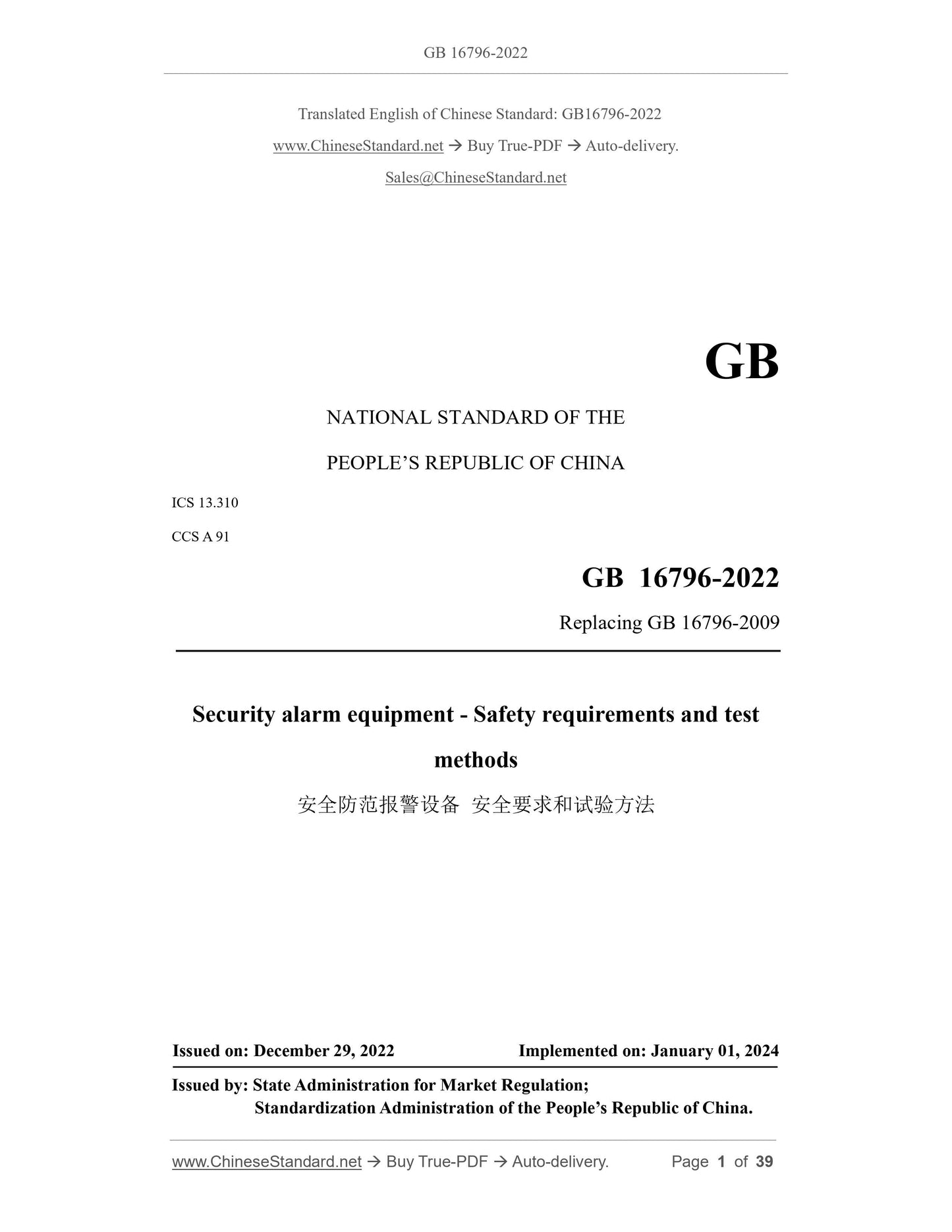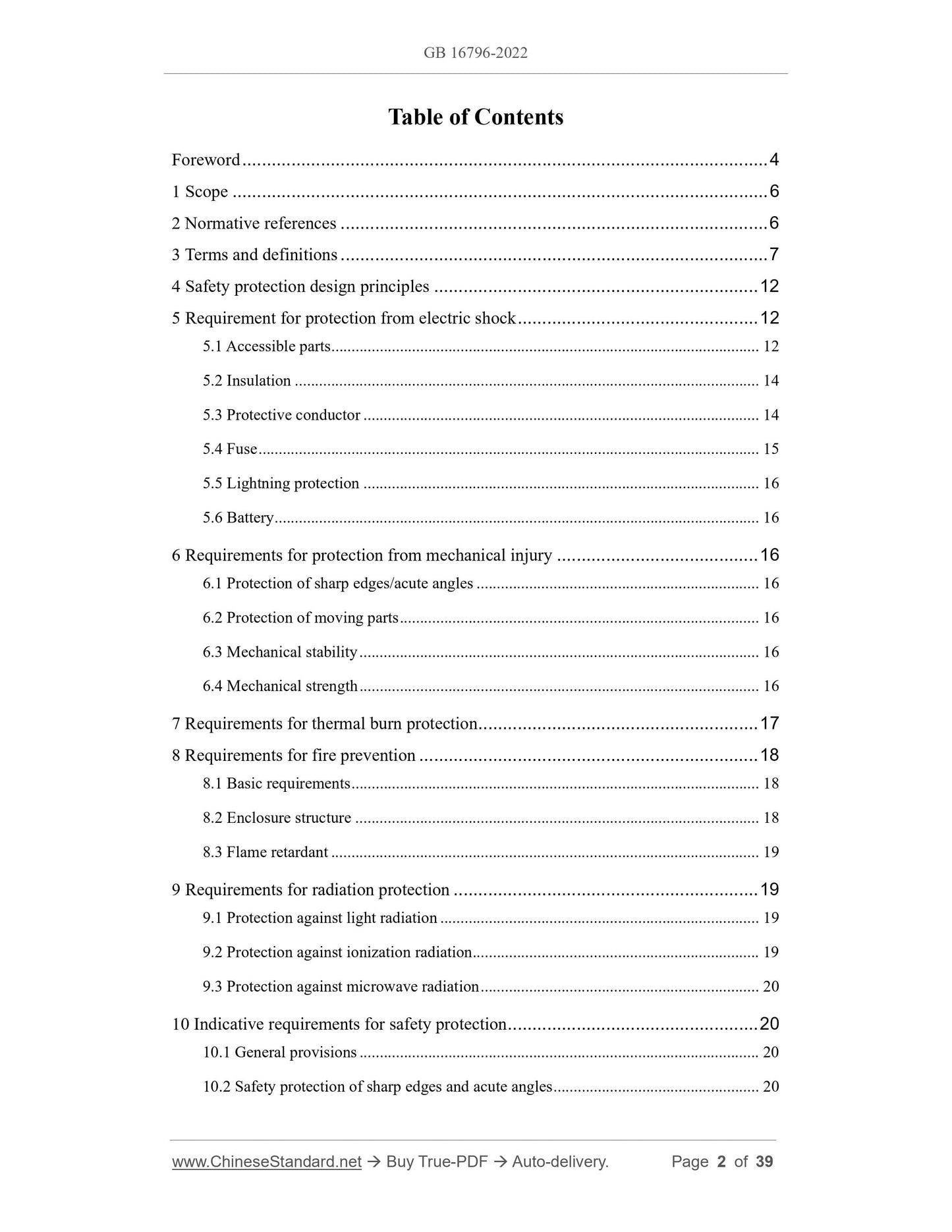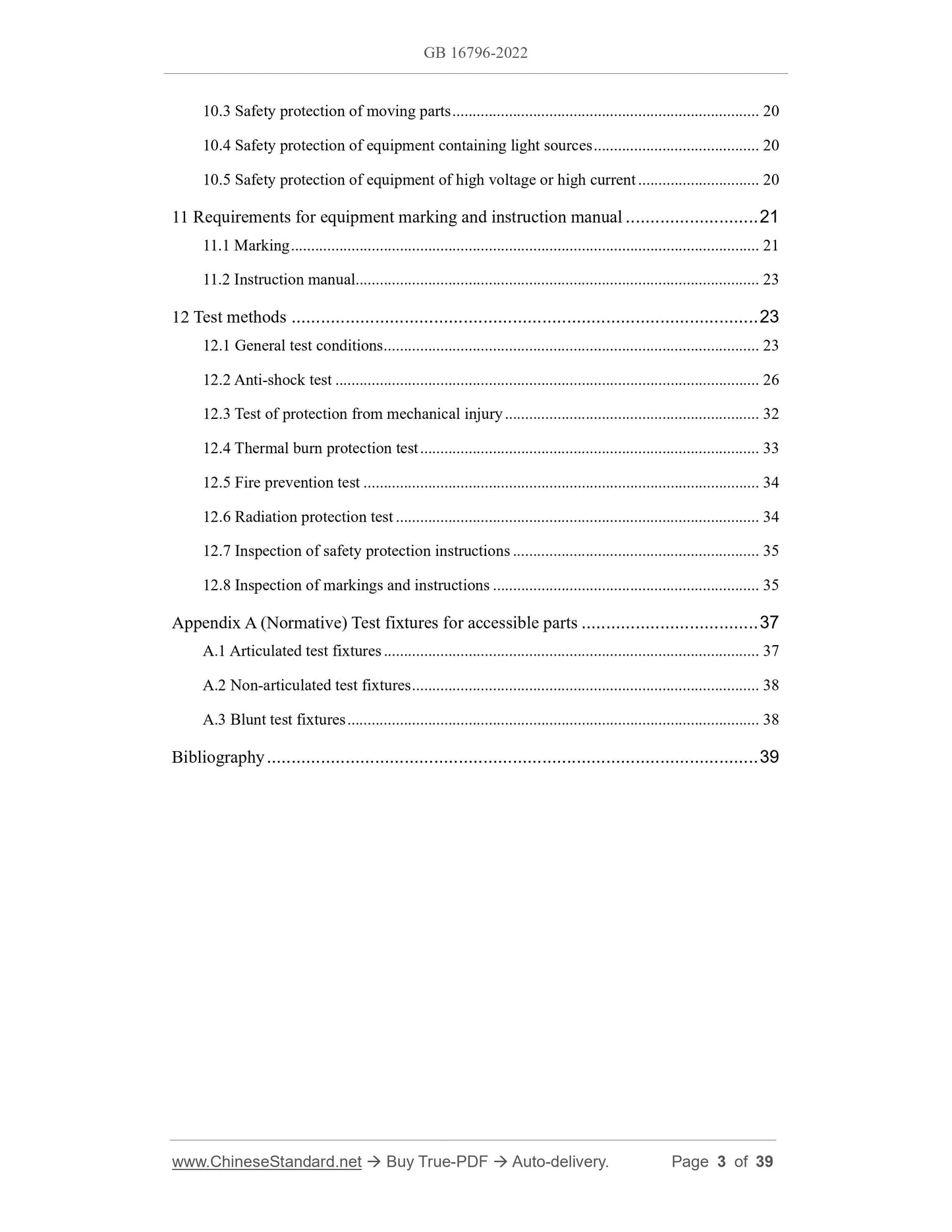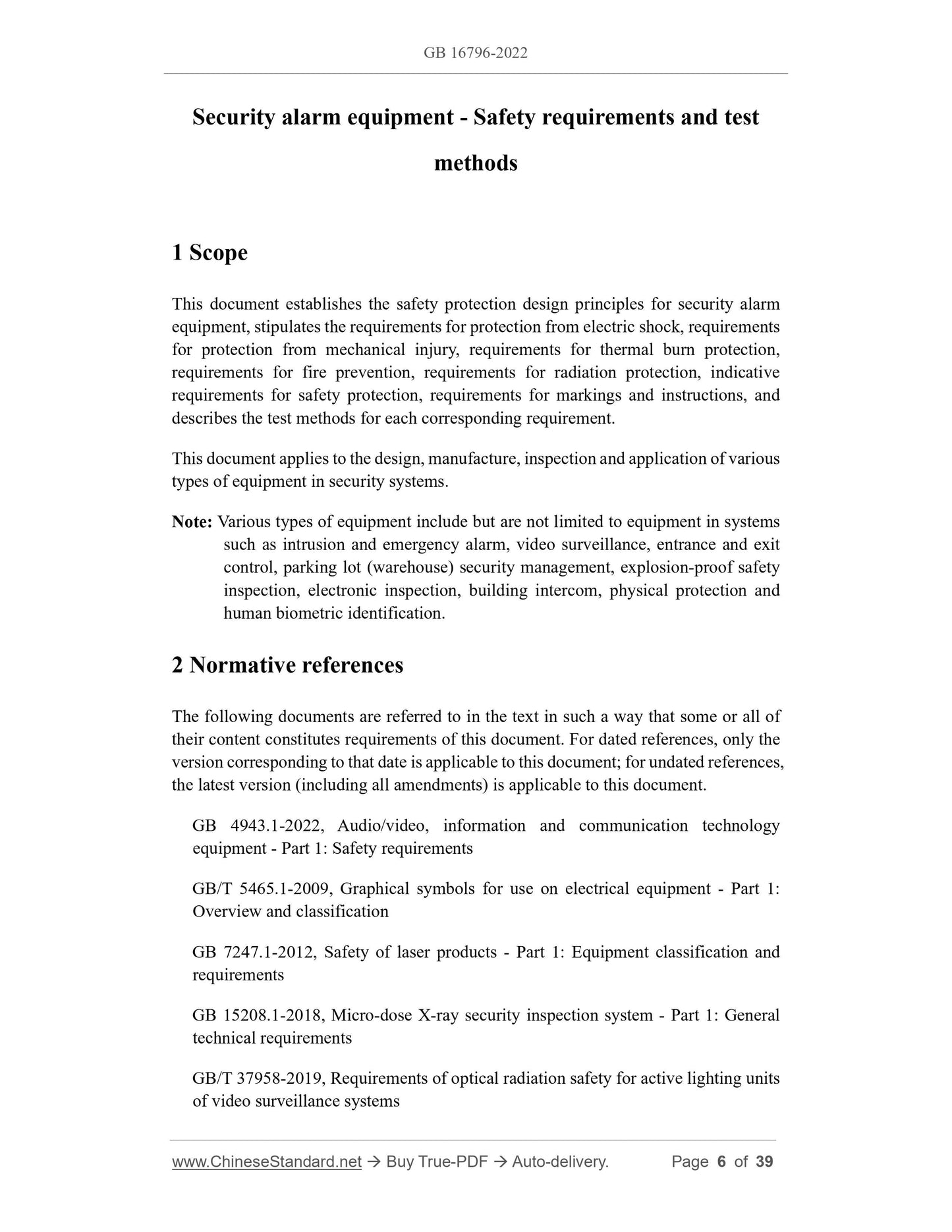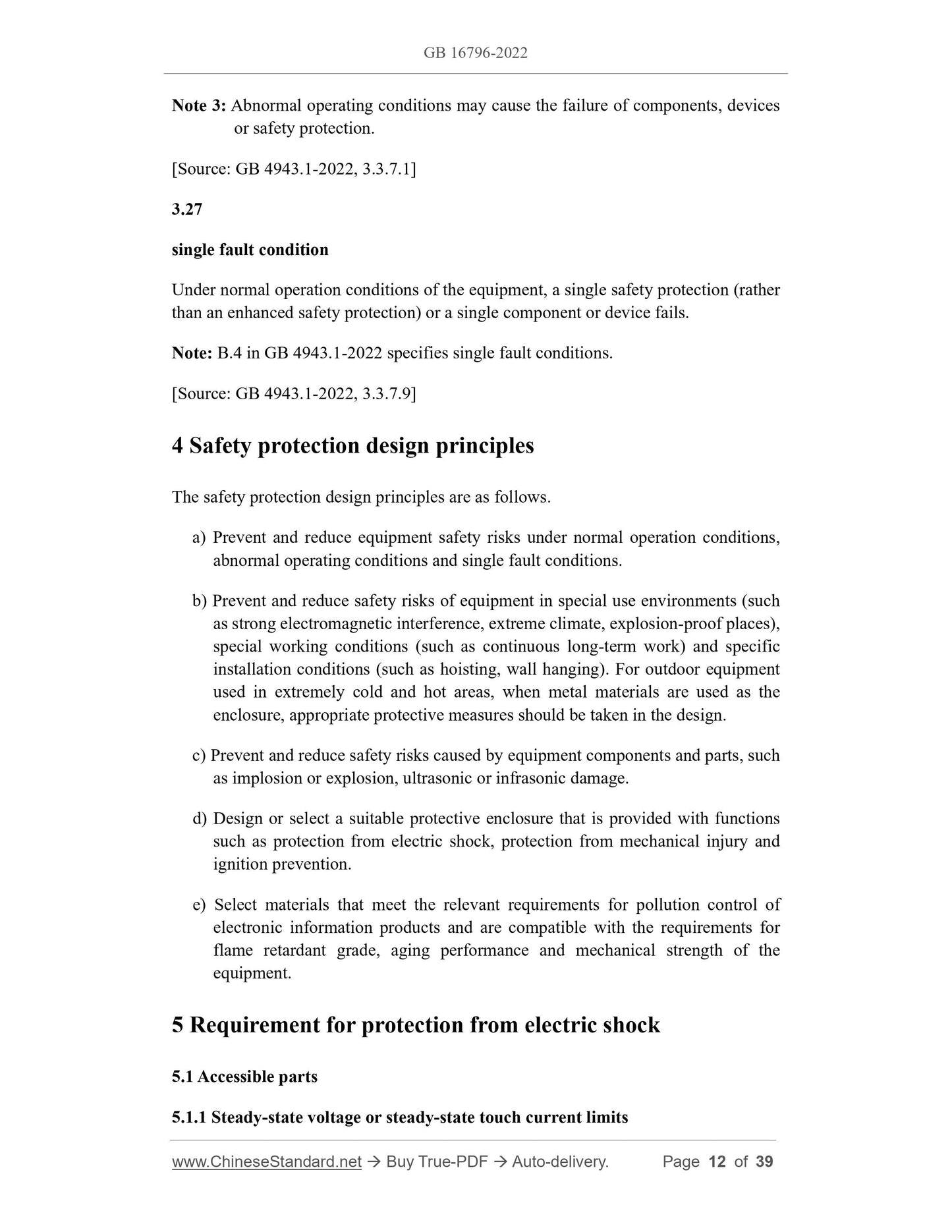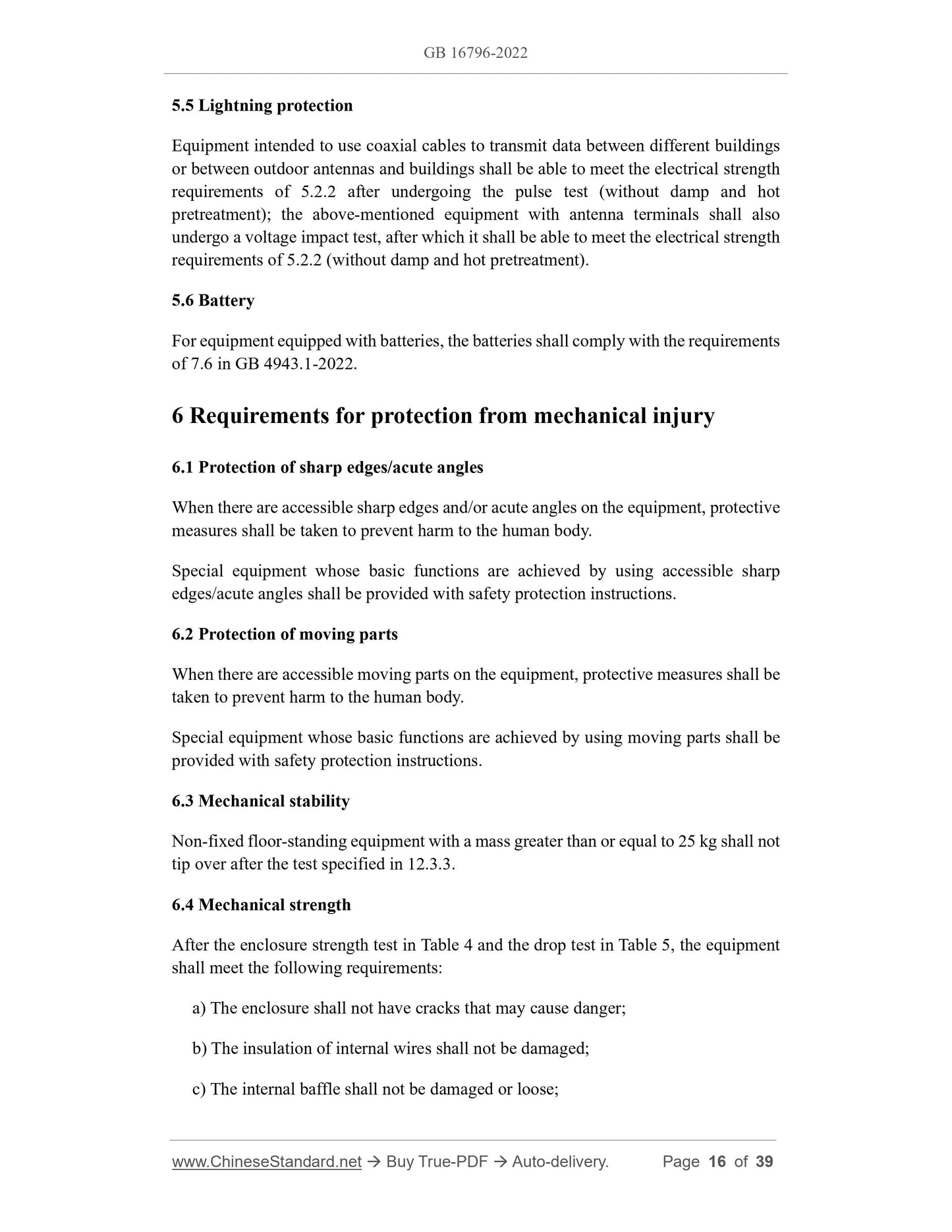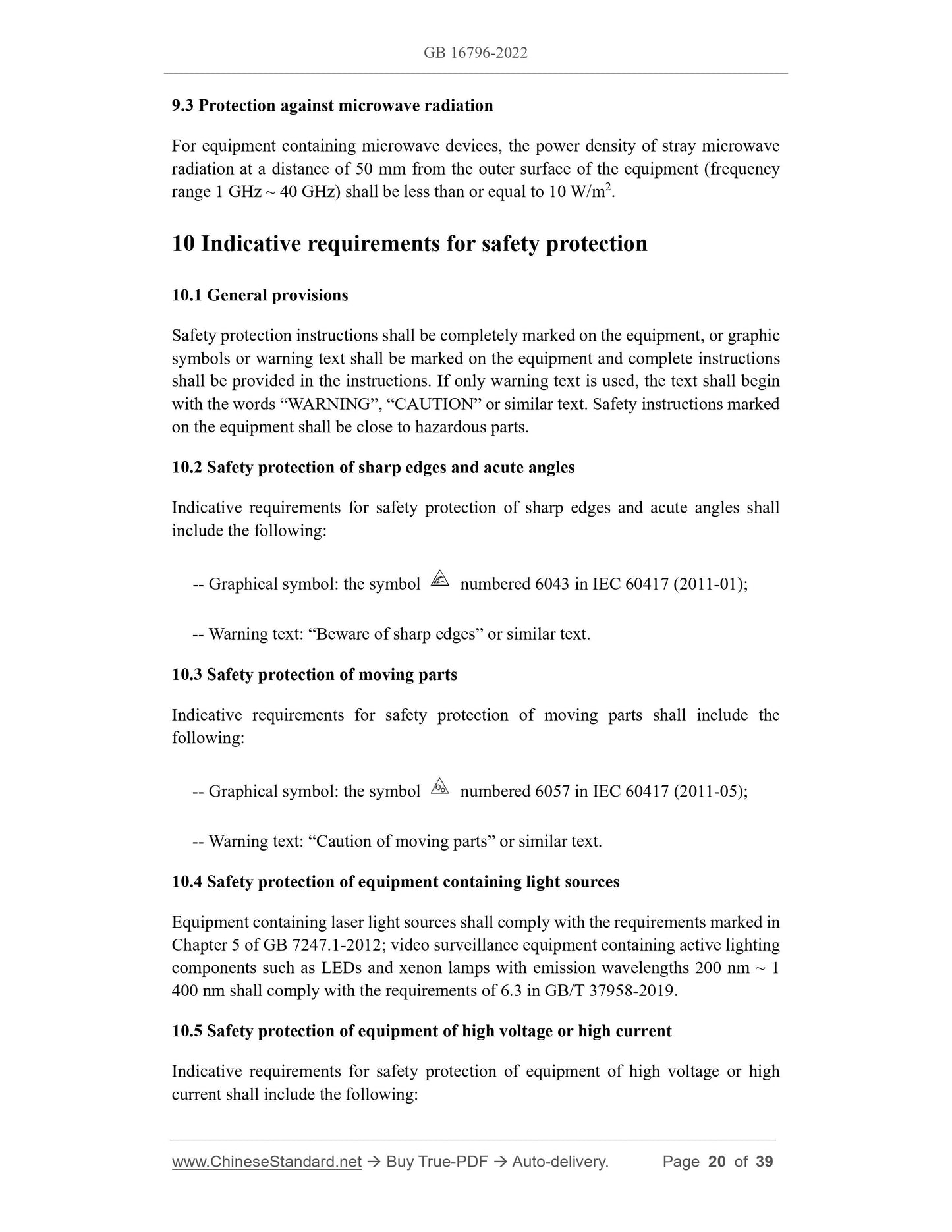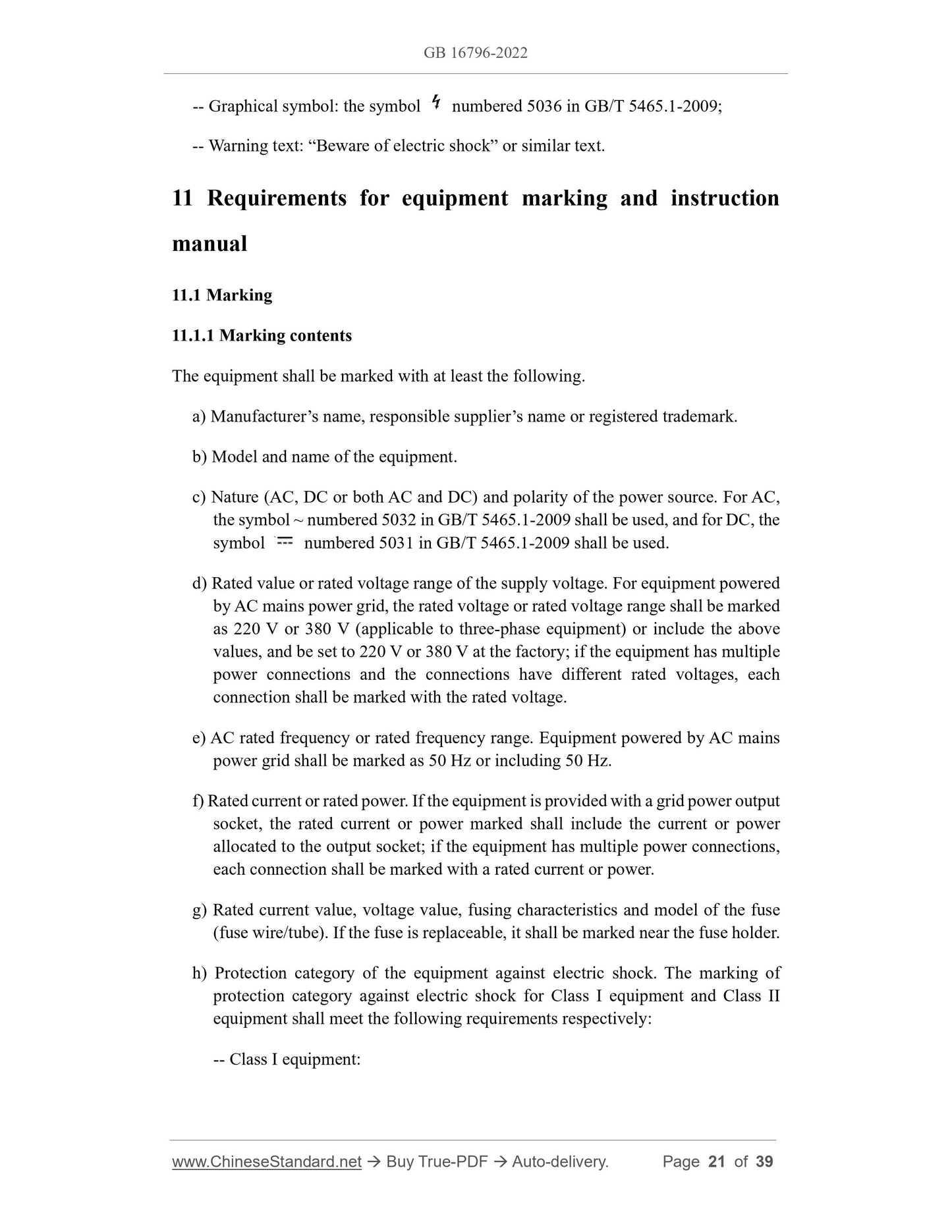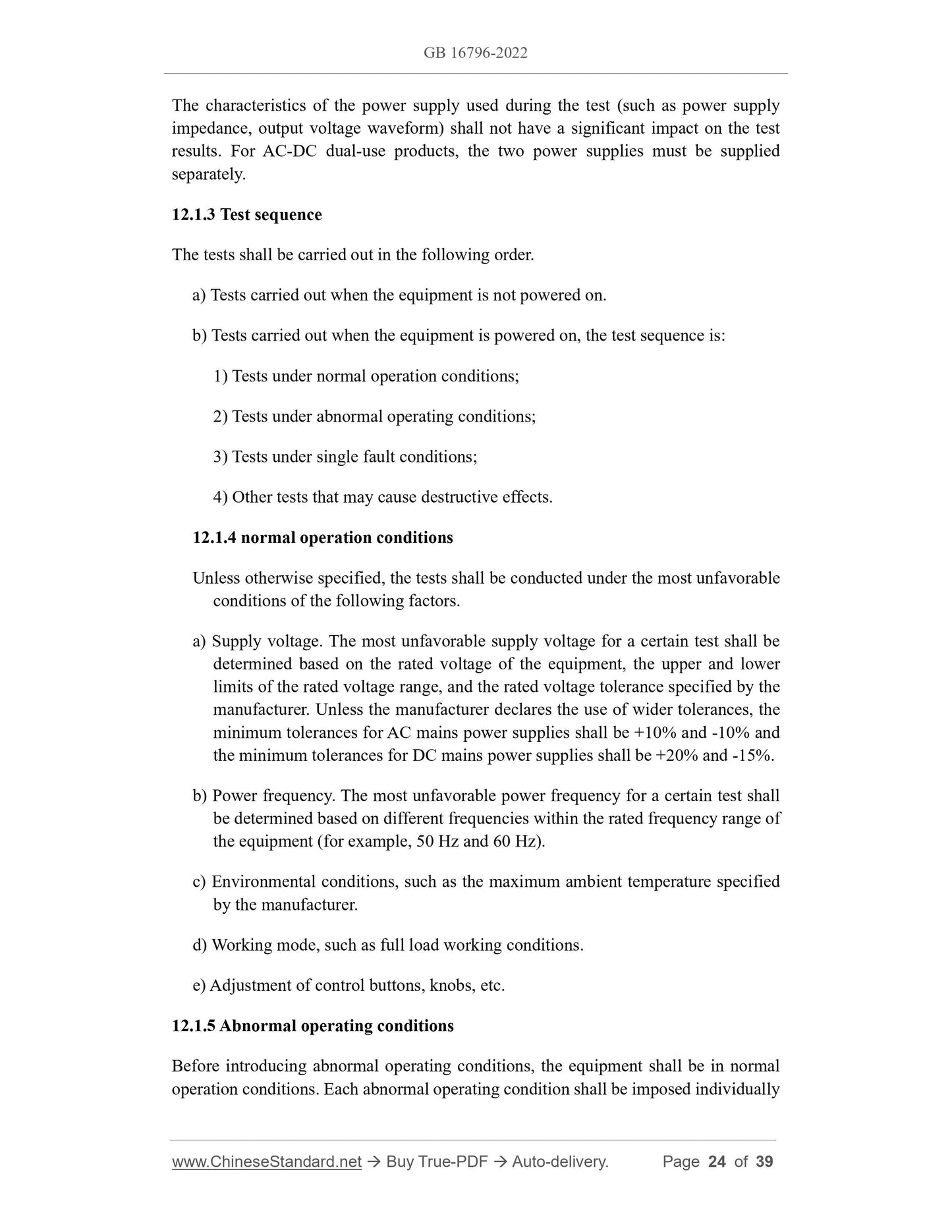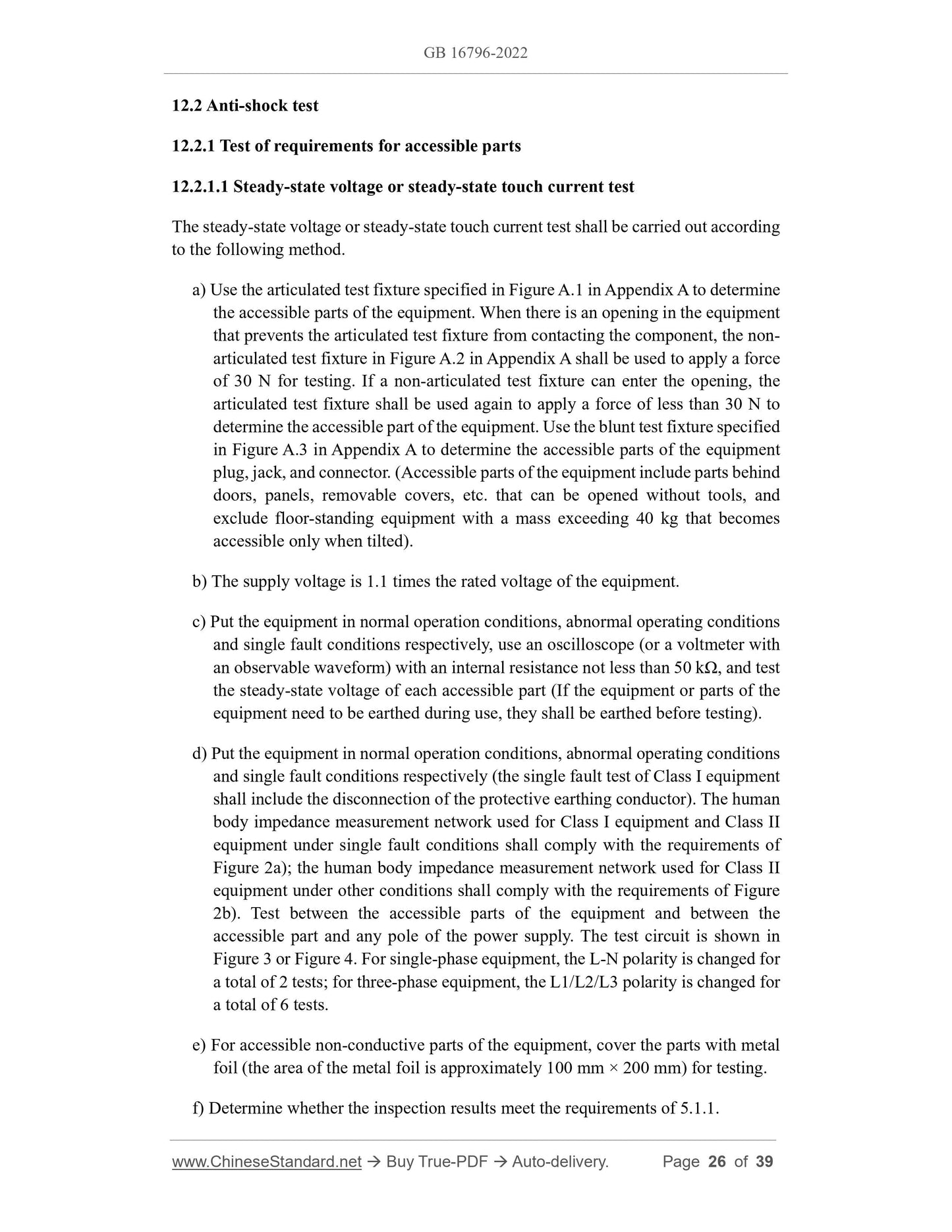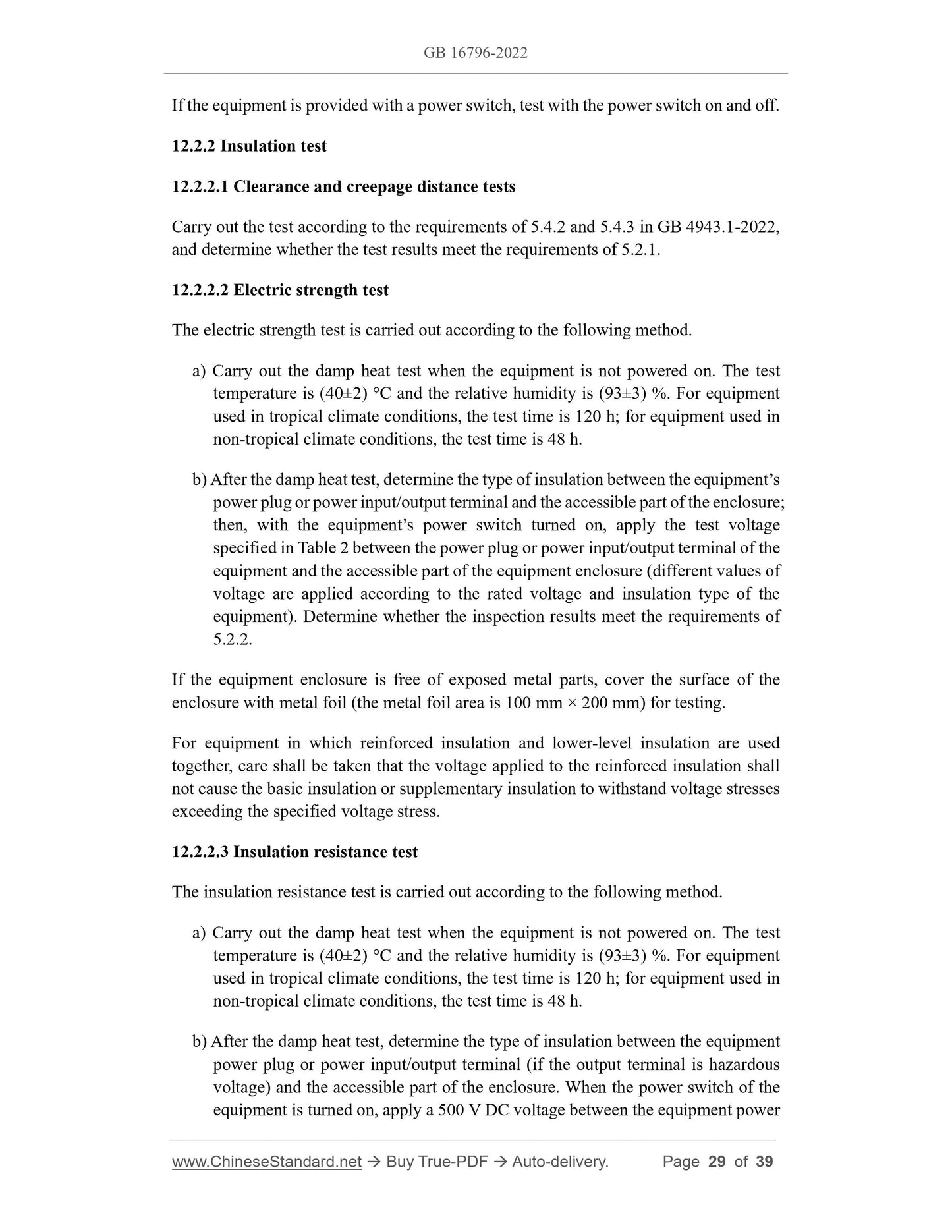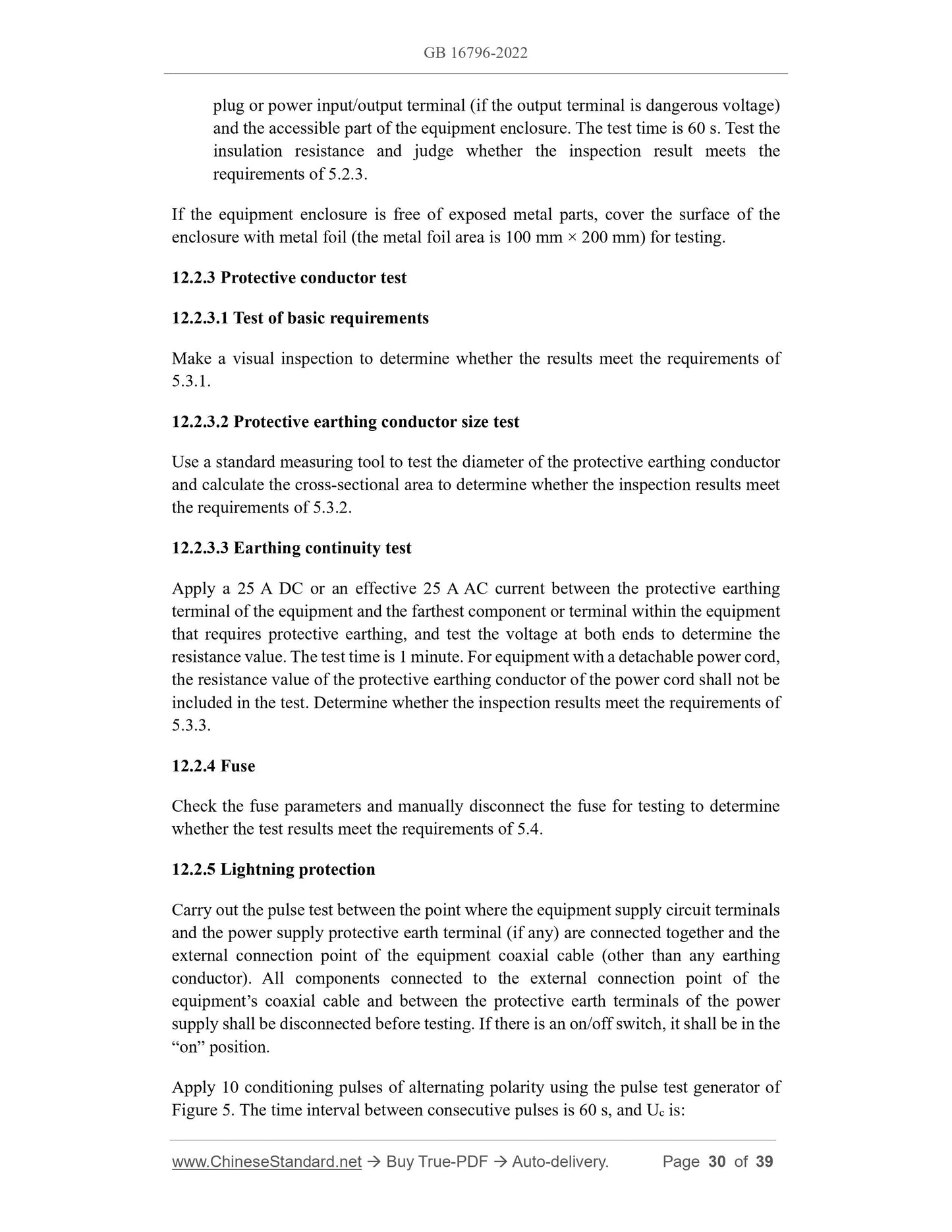1
/
of
12
www.ChineseStandard.us -- Field Test Asia Pte. Ltd.
GB 16796-2022 English PDF
GB 16796-2022 English PDF
Regular price
$410.00
Regular price
Sale price
$410.00
Unit price
/
per
Shipping calculated at checkout.
Couldn't load pickup availability
GB 16796-2022: Security alarm equipment - Safety requirements and test methods
Delivery: 9 seconds. Download (and Email) true-PDF + Invoice.Get Quotation: Click GB 16796-2022 (Self-service in 1-minute)
Newer / historical versions: GB 16796-2022
Preview True-PDF
Scope
This document establishes the safety protection design principles for security alarmequipment, stipulates the requirements for protection from electric shock, requirements
for protection from mechanical injury, requirements for thermal burn protection,
requirements for fire prevention, requirements for radiation protection, indicative
requirements for safety protection, requirements for markings and instructions, and
describes the test methods for each corresponding requirement.
This document applies to the design, manufacture, inspection and application of various
types of equipment in security systems.
Note: Various types of equipment include but are not limited to equipment in systems
such as intrusion and emergency alarm, video surveillance, entrance and exit
control, parking lot (warehouse) security management, explosion-proof safety
inspection, electronic inspection, building intercom, physical protection and
human biometric identification.
Basic Data
| Standard ID | GB 16796-2022 (GB16796-2022) |
| Description (Translated English) | Security alarm equipment - Safety requirements and test methods |
| Sector / Industry | National Standard |
| Classification of Chinese Standard | A91 |
| Classification of International Standard | 13.310 |
| Word Count Estimation | 30,361 |
| Date of Issue | 2022-12-29 |
| Date of Implementation | 2024-01-01 |
| Older Standard (superseded by this standard) | GB 16796-2009 |
| Issuing agency(ies) | State Administration for Market Regulation, China National Standardization Administration |
Share
